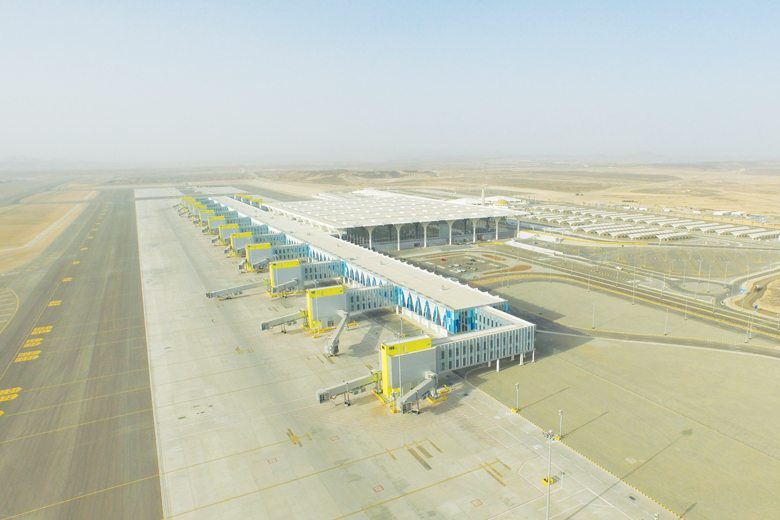

Interview: Sani Sener, CEO of TAV Group

Sani Sener, TAV Group
Sani Sener, TAV Group
With low oil prices and government budgets slashed over the past 18 months, the region has been turning to the private sector and the public-private partnership (PPP) model to bridge the funding gap.
TAV Group CEO Sani Sener has been a pioneer in the development of the PPP model for the aviation sector, and is looking forward to build on his experience as the region develops more airports in partnership with the private sector.
For many years I have been advocating the PPP structure, especially for airports because they are not infrastructure, says Sener. "They are commercial businesses. They have to be managed with commercial discipline. With PPP you can get everyone working together very easily. You can do it with EPC [engineering, procurement and construction] contracts, but it is not as easy.
Building on projects in its native Turkey, TAV has expanded and now operates 14 airport concessions in Asia, Africa and Europe.
In the Middle East, TAV operates two airports in Tunisia, and in the GCC the company is the lead shareholder in the Tibah Airports Operation Company consortium that is operating the recently expanded Prince Mohammed bin Abdulaziz airport in Medina, Saudi Arabia.
Fast execution
Medina is a very good example, says Sener. "NDIA [Hamad International airport in Qatar] is an airport we are proud of. It is one of the best airports in the world; now we are working on Abu Dhabi, Oman, and Bahrain, and they are going to be iconic airports. But when you compare timing, Medina airport, which is another iconic airport, was completed in only 24 months. This kind of fast execution is only viable with PPP.
Fast-track construction is made possible with close collaboration between stakeholders on a project. During construction, there is the designer, project manager, contractor and the operator. The operator normally comes onto the scene very late, so there are a lot of changes and these cause a lot of problems between the project manager and the contractor, says Sener. Then, during operation there is the ground-handling operator, airport operator, air traffic controller, airlines, immigration and security, and they all have to be connected to each other.
Crucially, PPP projects take the financial burden of infrastructure development away from the government a facet that is increasingly important when oil prices are low and state budgets are squeezed. Securing finance for airports is easy, says Sener. "But banks are seeking companies to work with that can give them a guarantee of completion. TAV Construction has this capability. Banks also like an investor that knows operations very well and can help increase revenues, reduce costs and make operations more efficient. TAV has this capability also, and that is why international banks and international financial institutions mainly prefer firms like TAV when investing in airports."
Airport operations
The PPP model also enhances collaboration once the construction is complete. There are many stakeholders in the operation of airports, says Sener. "The connectivity between these stakeholders helps improve the passenger experience, increase operational efficiency, maximise revenues and increase security effectiveness."
Not all airports have to be PPP, and the model is not well-suited to the larger projects developed in the region. [In the GCC], the potential for PPP is limited, says Sener. "Honestly, I have to make it very clear. Dubai, Abu Dhabi, Qatar, Oman and Bahrain do not need it [PPPs]. Why? Because they have very powerful flag carriers and these airlines and airport operators have the same ultimate owners, so they have natural connectivity and communication. What I am talking about is Africa and other parts of the Middle East, where governments can allocate their funds to other areas. There is no need to allocate funds for [developing] airports [in areas such as] Africa. The private sector can easily do it and they can allocate their funds to areas such as health bridges, and infrastructure which is not viable through PPP.
One regional country where PPP is applicable is Saudi Arabia, where the government has opened up the aviation sector to the private sector. Sener says this move is similar to the strategy adopted by Turkey 15 years ago, and is expecting similar opportunities in the kingdom.

Prince Mohammed bin Abdulaziz airport in Medina, Saudi Arabia
Prince Mohammed bin Abdulaziz airport in Medina, Saudi Arabia
In Saudi Arabia, Gaca [General Authority of Civil Aviation] has embarked on a privatisation [programme] and I am sure that with liberalisation in the air and privatisation on the ground, Saudi Arabia is going to be very successful in aviation, says Sener. Turkey used this method 15 years ago. When TAV was established, there were only 33 million passengers [a year] in Turkey. Now there are 182 million passengers [a year] and we have seven brand new airports.
Such ambitious targets are difficult to achieve, especially in the challenging market conditions that have prevailed in Saudi Arabia this year, but Sener remains positive on the prospects for the market.
I always say being positive does not mean you are optimistic," he says. "If you are optimistic, you do not avoid risks, but if you are positive, you see the opportunities and the risks. I am not an optimistic guy, I am a positive guy, and I am positive about the region.
You might also like...

TotalEnergies to acquire remaining 50% SapuraOMV stake
26 April 2024

Hyundai E&C breaks ground on Jafurah gas project
26 April 2024

Abu Dhabi signs air taxi deals
26 April 2024

Spanish developer to invest in Saudi housing
26 April 2024
A MEED Subscription...
Subscribe or upgrade your current MEED.com package to support your strategic planning with the MENA region’s best source of business information. Proceed to our online shop below to find out more about the features in each package.








